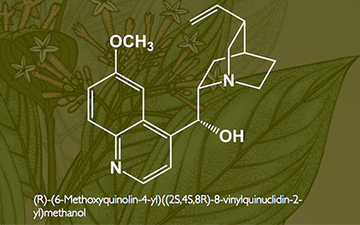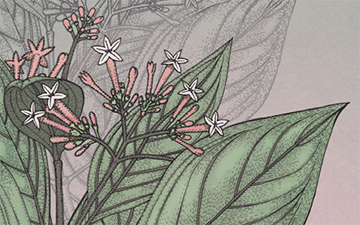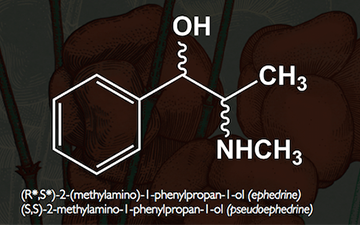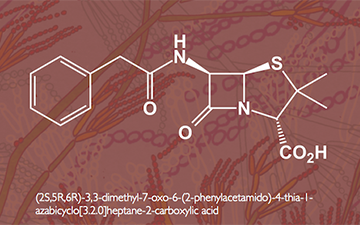Phytochemistry Expansion Deck
2016 – (See Cards/Deck Info | Download | Purchase)…
This set was designed by Dr. Stephen McNeil (and illustrated by Julia K. Kreutz) to highlight plant species that are important because of the chemical compounds they provide. As such, it introduces to the Phylo system, a new card type (Chemistry cards), as well as a new rule for expanded play in the Phylo Ecosystem Rules. This deck can be used an expansion deck for the main Phylo ecosystem game (cannot be played on its own in this manner), or used as a stand alone game where pair wise mechanics are followed (i.e. memory, go fish, etc). Includes 10 plant species cards, and 10 associated phytochemical cards.

QUININE (MW: 324.4)
.
C20H24N2O2
SOURCE: Cinchona trees.
USE: antipyretic, antimalarial.
PLAY: Place under source card for + 5 points.

Cinchona tree
Cinchona genus


2 POINTS
Fact: The drug quinine is isolated from cinchona.

(PSEUDO*)EPHEDRINE (MW: 165.23)
.
C10H15NO
SOURCE: Ma Huang. *Pseudoephedrine is a diastereomer of ephedrine
USE: stimulant, bronchodilator, appetite suppressant.
PLAY: Place under source card for + 5 points.

Ma Huang
Ephedra sinica


2 POINTS
Fact: The drugs ephedrine and pseudoephedrine are found in the Ma Huang plant.

PENICILLIN G (MW: 334.4)
.
C16H18N2O4S
SOURCE: Penicillium species
USE: antibiotic (also known as benzylpenicillin).
PLAY: Place under source card for + 5 points.

Penicillium
Penicillium chrysogenum


2 POINTS
Fact: The antibiotic, Penicillin G, is derived from this species of fungus.